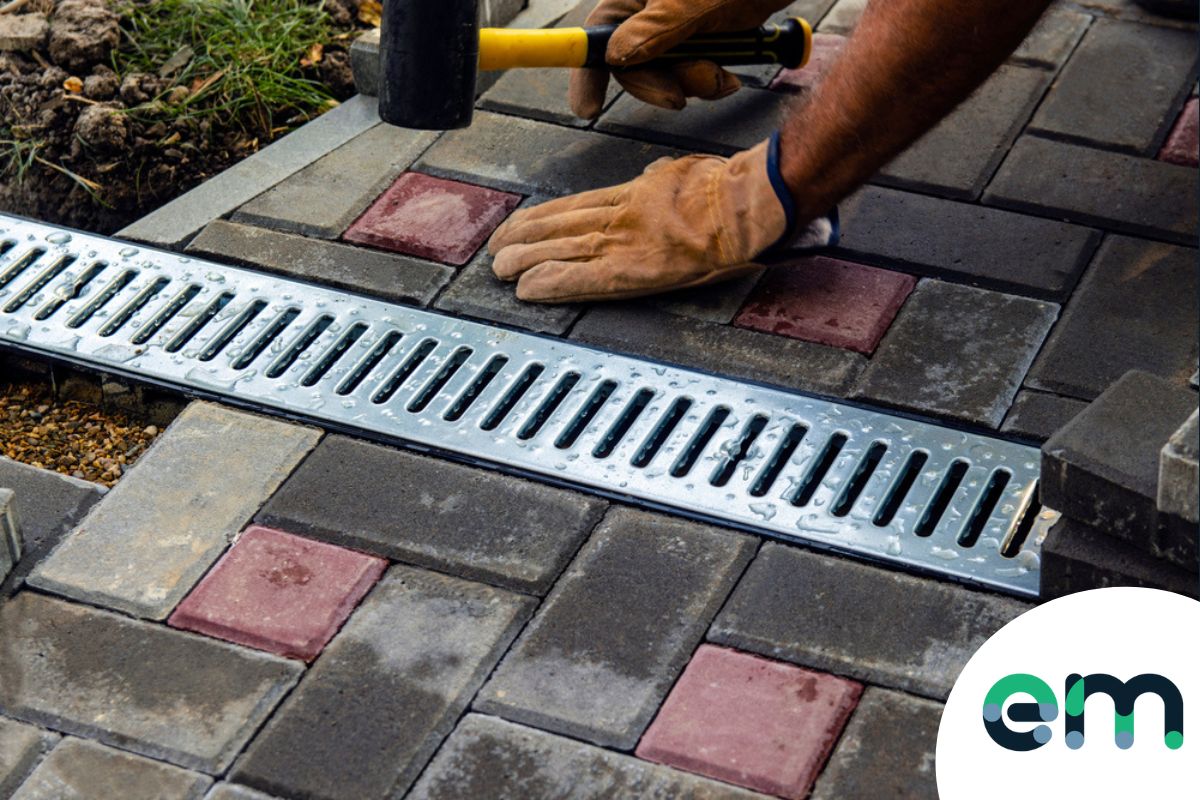
Patio Water Drainage: A Comprehensive Guide
Introduction
A well-drained patio is essential for creating a comfortable and functional outdoor living space. Proper drainage prevents water from pooling, which can lead to slippery surfaces, damage to the patio, and the growth of mold and mildew. This comprehensive guide will provide you with everything you need to know about patio water drainage, including the different types of drainage systems, how to install them, and how to maintain them.
Types of Patio Drainage Systems
There are two main types of patio drainage systems:
- Surface Drainage: Surface drainage systems collect water from the surface of the patio and direct it away from the foundation. This type of system is typically used for patios that are not covered or have a slight slope.
- Subsurface Drainage: Subsurface drainage systems collect water from below the surface of the patio and direct it away from the foundation. This type of system is typically used for patios that are covered or have a flat surface.
Surface Drainage Systems
There are several different types of surface drainage systems, including:
- Gutters: Gutters are installed along the edge of the patio to collect water from the roof or other structures. The water is then directed away from the patio through downspouts.
- French Drains: French drains are trenches filled with gravel that are installed around the perimeter of the patio. The water seeps into the gravel and is then directed away from the patio.
- Dry Wells: Dry wells are holes filled with gravel that are installed in the ground. The water seeps into the gravel and is then absorbed by the soil.
Subsurface Drainage Systems
There are several different types of subsurface drainage systems, including:
- Perforated Pipes: Perforated pipes are installed below the surface of the patio and collect water from the ground. The water is then directed away from the patio through a drainpipe.
- Drain Tiles: Drain tiles are similar to perforated pipes, but they are made of clay or concrete. They are installed below the surface of the patio and collect water from the ground. The water is then directed away from the patio through a drainpipe.
- Geotextile Fabrics: Geotextile fabrics are synthetic fabrics that are installed below the surface of the patio to prevent soil from clogging the drainage system.
Installing a Patio Drainage System
The installation of a patio drainage system will vary depending on the type of system you choose. However, there are some general steps that you can follow:
- Excavate the area: Excavate the area where you will be installing the drainage system. The depth of the excavation will vary depending on the type of system you choose.
- Install the drainage system: Install the drainage system according to the manufacturer’s instructions.
- Backfill the area: Backfill the area around the drainage system with soil or gravel.
- Compact the soil: Compact the soil around the drainage system to prevent it from settling.
Maintaining a Patio Drainage System
Once you have installed a patio drainage system, it is important to maintain it to ensure that it continues to function properly. Here are some tips for maintaining your patio drainage system:
- Clean the gutters: Clean the gutters regularly to remove leaves and other debris that can clog the system.
- Inspect the French drains: Inspect the French drains regularly to ensure that they are not clogged. If the drains are clogged, you can use a hose to flush them out.
- Check the dry wells: Check the dry wells regularly to ensure that they are not clogged. If the wells are clogged, you can use a shovel to remove the debris.
- Inspect the perforated pipes: Inspect the perforated pipes regularly to ensure that they are not clogged. If the pipes are clogged, you can use a hose to flush them out.
- Inspect the drain tiles: Inspect the drain tiles regularly to ensure that they are not cracked or broken. If the tiles are cracked or broken, you will need to replace them.
- Inspect the geotextile fabrics: Inspect the geotextile fabrics regularly to ensure that they are not torn or damaged. If the fabrics are torn or damaged, you will need to replace them.
Troubleshooting Patio Water Drainage Problems
If you are experiencing water drainage problems on your patio, there are a few things you can do to troubleshoot the problem:
- Check the gutters: Make sure that the gutters are clean and free of debris.
- Inspect the French drains: Make sure that the French drains are not clogged.
- Check the dry wells: Make sure that the dry wells are not clogged.
- Inspect the perforated pipes: Make sure that the perforated pipes are not clogged.
- Inspect the drain tiles: Make sure that the drain tiles are not cracked or broken.
- Inspect the geotextile fabrics: Make sure that the geotextile fabrics are not torn or damaged.
If you are unable to troubleshoot the problem yourself, you may need to contact a professional to help you.
Conclusion
A well-drained patio is essential for creating a comfortable and functional outdoor living space. By following the tips in this guide, you can install and maintain a patio drainage system that will keep your patio dry and free of water damage.